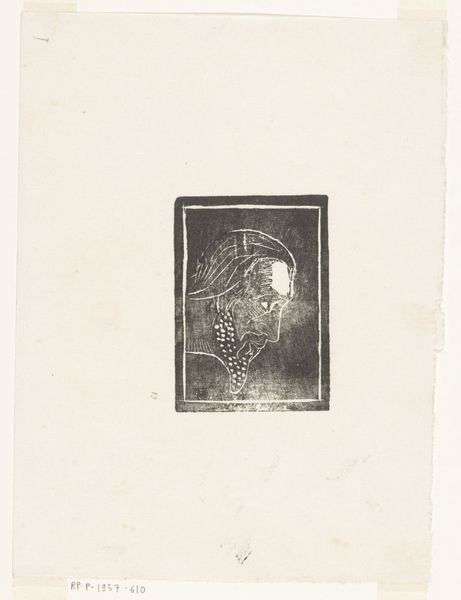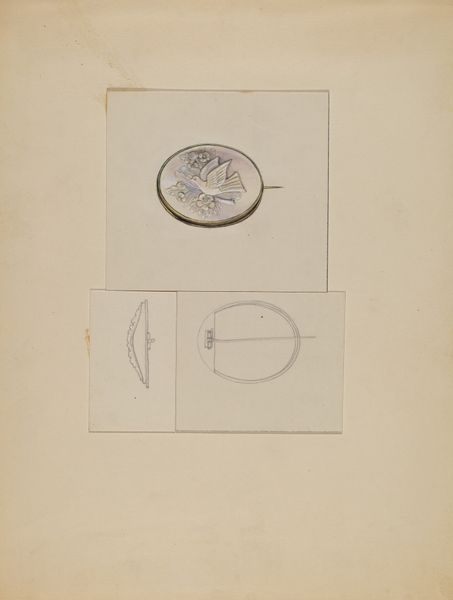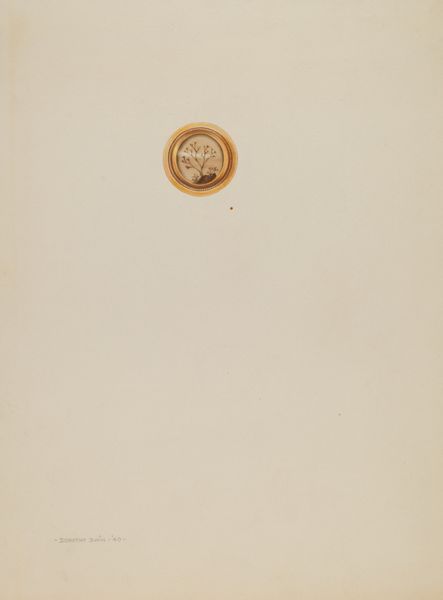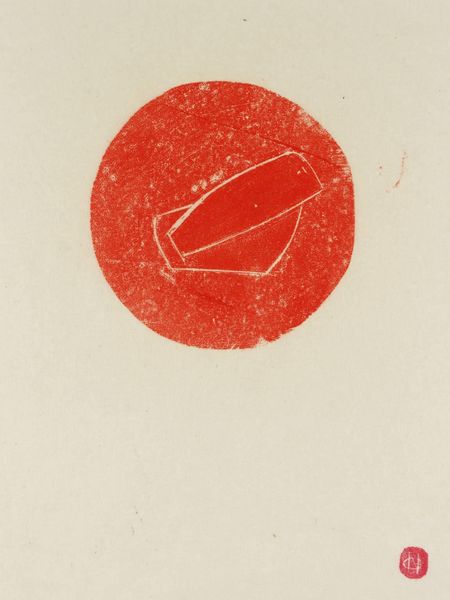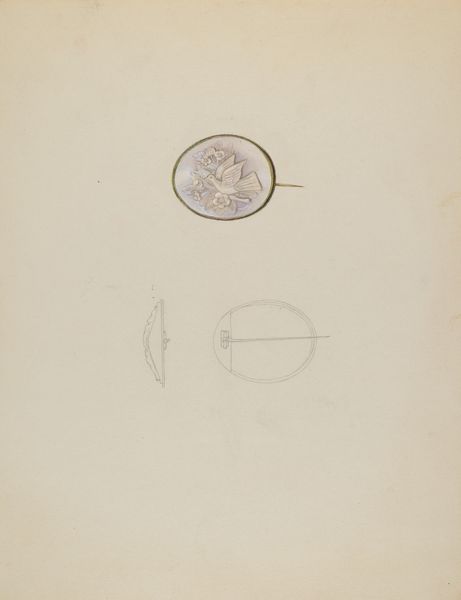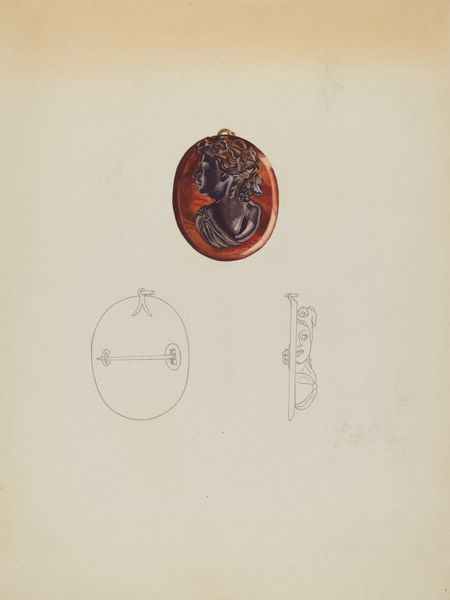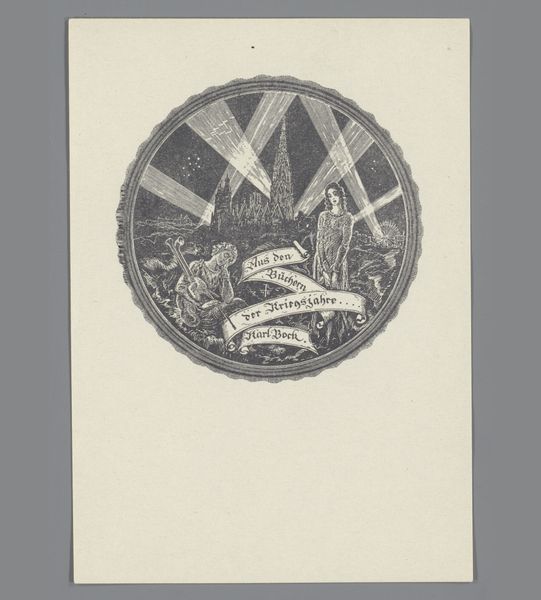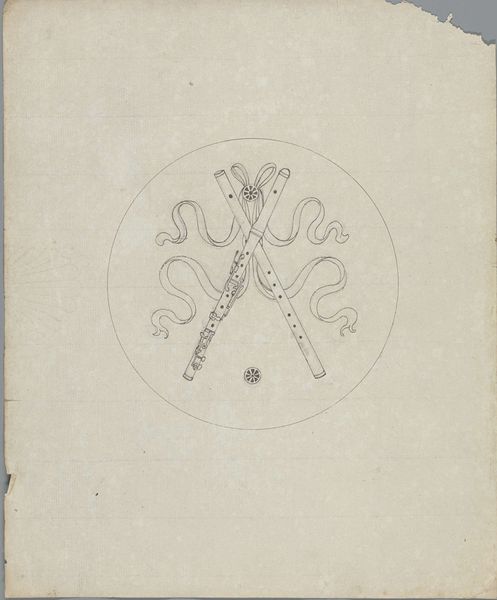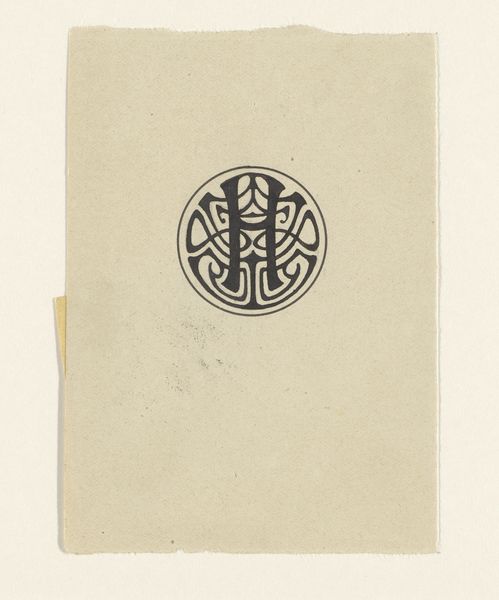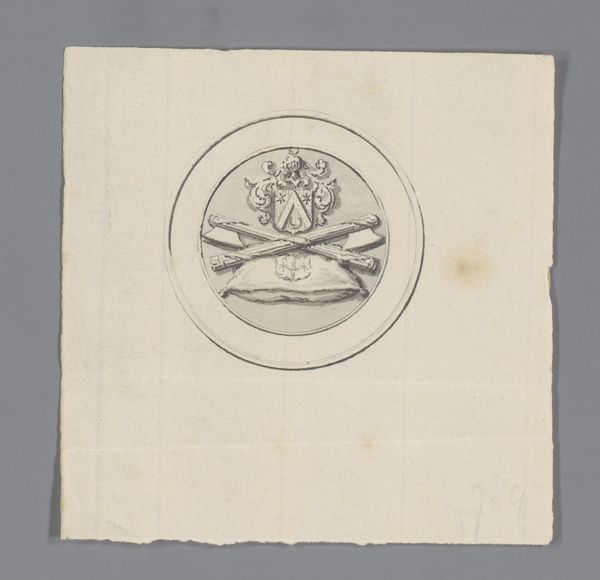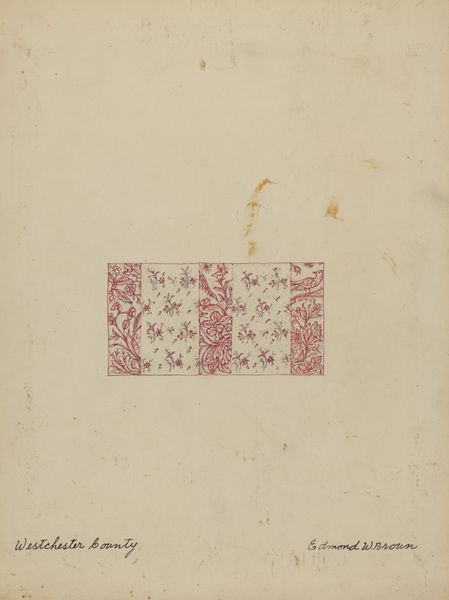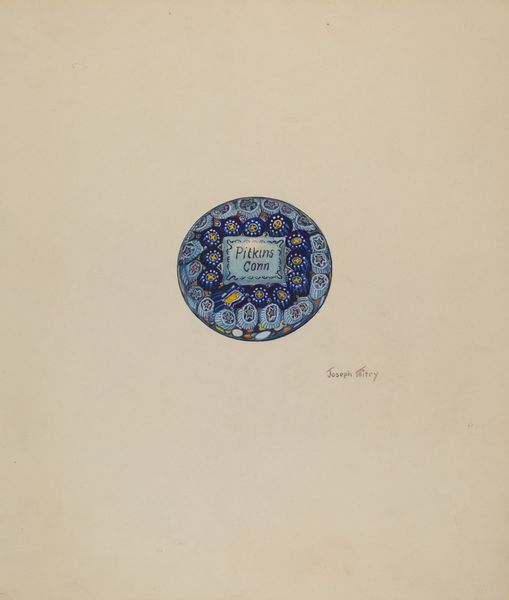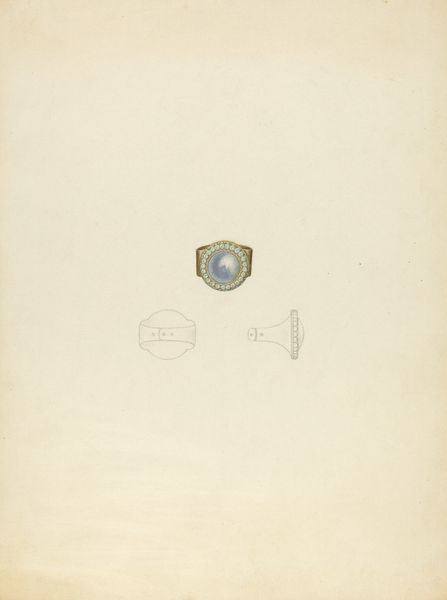
drawing, watercolor
#
drawing
#
watercolor
#
geometric
#
watercolour illustration
#
decorative-art
#
modernism
#
watercolor
Dimensions: overall: 28 x 22.9 cm (11 x 9 in.) Original IAD Object: 3 1/2" x 3 1/2"
Copyright: National Gallery of Art: CC0 1.0
Curator: This watercolor and graphite drawing, titled "Cup Plate," was created around 1936 by Florence Stevenson. At first glance, what impressions does it leave you with? Editor: It feels so serene, almost melancholic. The gentle blues and whites create a quiet, contemplative space. There's a certain austerity too, don't you think? It feels incredibly restrained. Curator: Indeed. I think it's important to note the symbolism inherent in even such a simple subject. The plate, historically and across cultures, can represent nourishment, community, and even ritual. Stevenson’s modern interpretation strips away the overtly symbolic while hinting at its enduring presence in our lives. Editor: Yes, I see that. It's interesting how a common household object can carry so much cultural weight. What stands out for me is the stark whiteness, and the empty centre which is almost unsettling. In the 1930s, with so much global economic upheaval, representing emptiness perhaps suggests not abundance, but absence, revealing anxieties about provision. Curator: That's a fascinating perspective. Perhaps the deliberate geometry adds another layer of meaning here. Geometric forms in art are often used to convey order and stability. It’s like Stevenson uses this imagery as a means of psychological stability. Editor: I wonder too about the perspective. We view the plate directly from above, losing any sense of three-dimensionality. Is this to emphasize the flattened, stylized aesthetics of the decorative arts? Or does it imply a disengaged gaze, reflecting social disconnect? Curator: These visual choices invite deep speculation. It is interesting how these modernist stylistic preferences were so different from classical works, representing a move to modernity after WW1. Stevenson, by combining decorative elements and geometric patterns with fine art techniques, creates this beautiful and unsettling image. Editor: I find it compelling how she brings a wealth of cultural and sociohistorical possibilities with something so simple. It allows us to rethink the value we place in even the simplest material world objects.
Comments
No comments
Be the first to comment and join the conversation on the ultimate creative platform.
